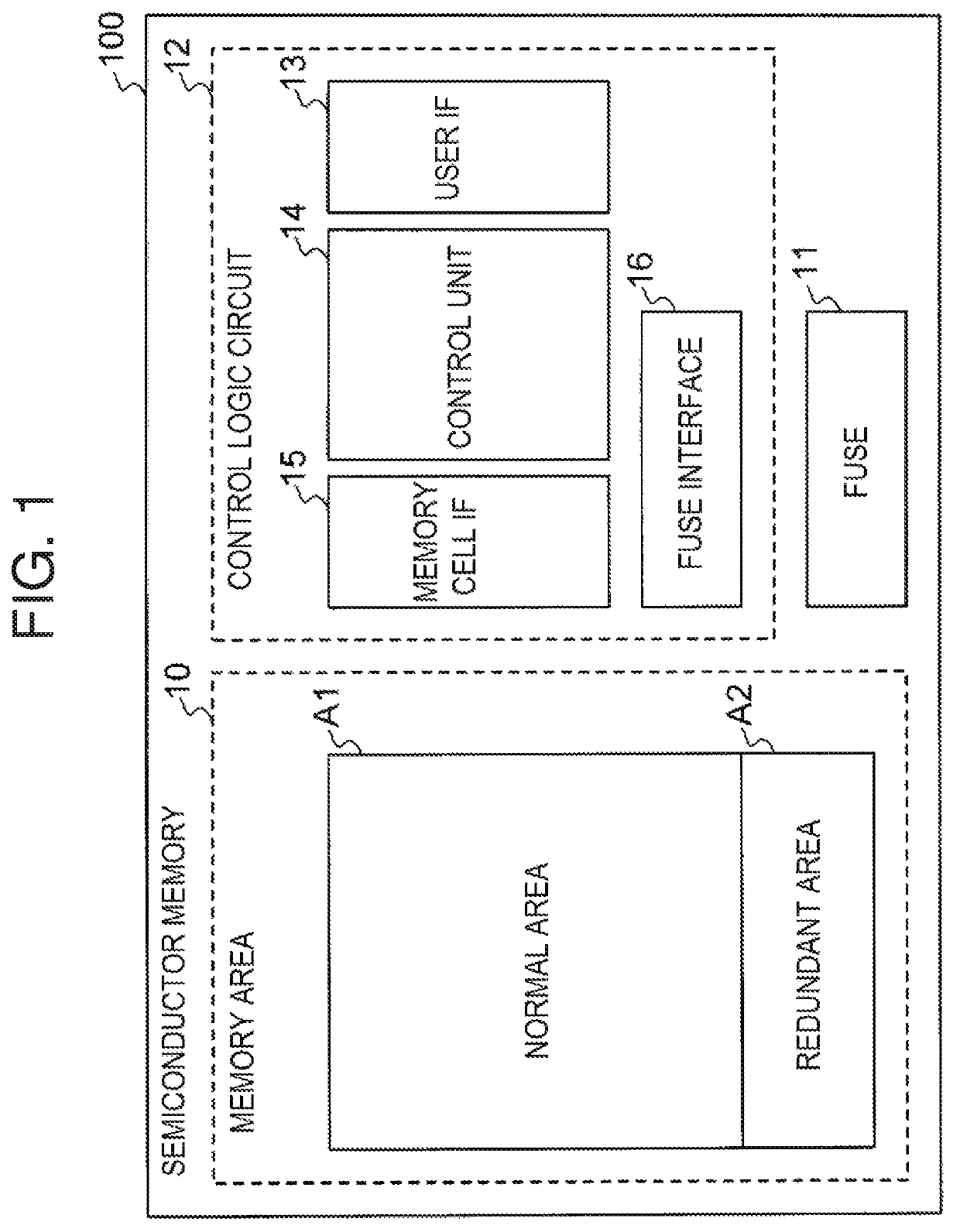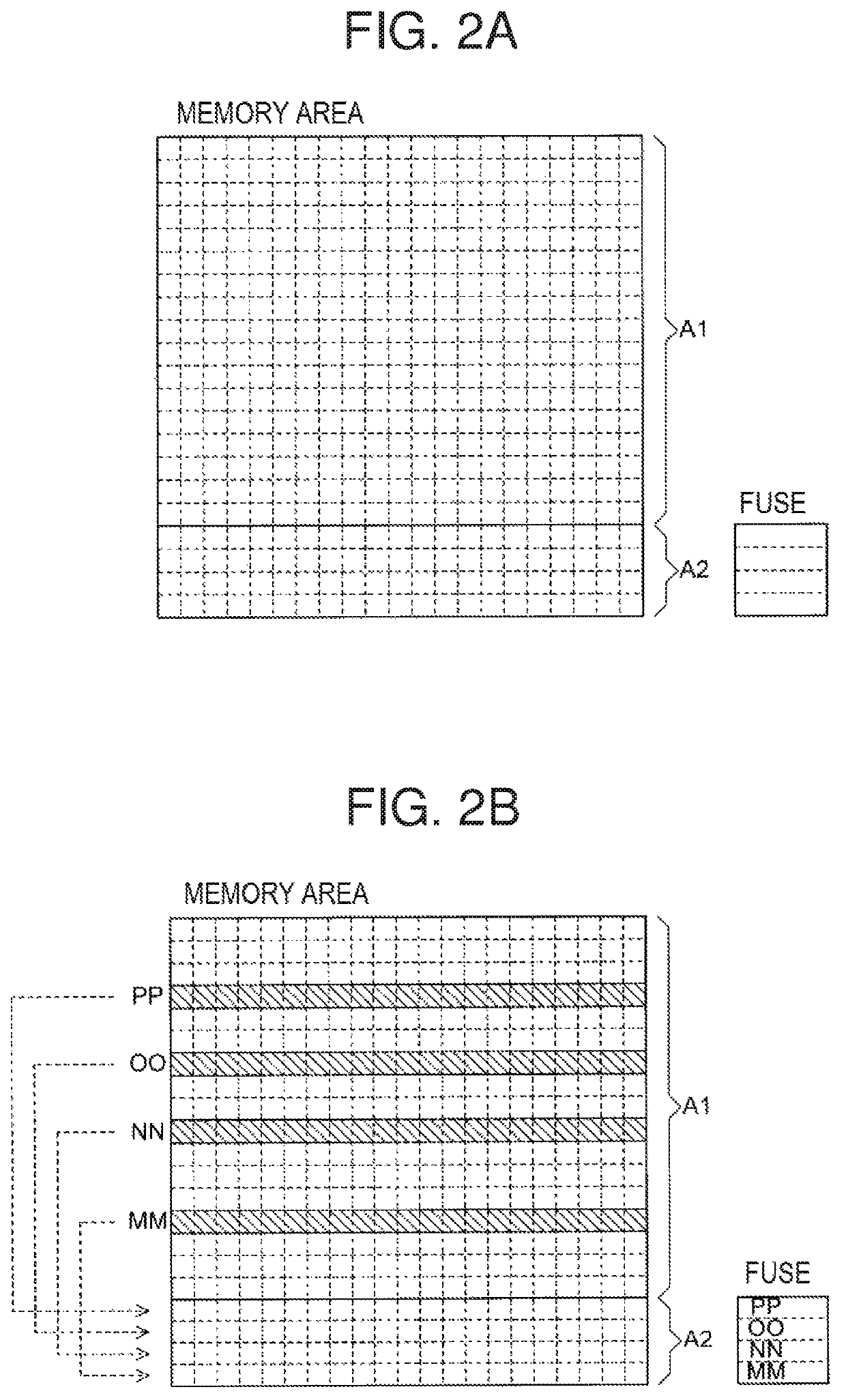Testing method for semiconductor memory
a technology of semiconductor memory and test method, which is applied in the direction of information storage, static storage, digital storage, etc., can solve the problems of deemed defective semiconductor memory, and achieve the effect of small variation in performan
- Summary
- Abstract
- Description
- Claims
- Application Information
AI Technical Summary
Benefits of technology
Problems solved by technology
Method used
Image
Examples
embodiment 1
[0017]FIG. 1 is a block diagram illustrating the configuration of semiconductor memory 100 of a first embodiment. The semiconductor memory 100 is constituted of a DRAM (dynamic random access memory), for example. The semiconductor memory 100 includes a memory area 10, a fuse 11, and a control logic circuit 12.
[0018]The memory area 10 includes a normal area A1 and a redundant area A2. The normal area A1 is a memory area made up of memory cells to be accessed in a regular memory access process. The redundant area A2 is a memory area including redundant blocks that replace blocks in the normal area A1 which include more defective cells than a prescribed number (referred to throughout the specification as defective blocks).
[0019]The fuse 11 stores the address of each defective block as a “redundant address” in association with the address of a redundant block to be replaced with. The fuse 11 is constituted of a plurality of fuse elements, and stores the information of redundant address ...
embodiment 2
[0043]Next, another embodiment of the present invention will be explained. The testing method of this embodiment differs from the testing method of the first embodiment in that a defective block to be replaced with a redundant block is selected by turning off the semiconductor memory 100 and then turning it back on, instead of repeating the test to determine defective cells.
[0044]One of the characteristics of DRAM is that when the power is turned off and then turned back on, electrical charges are accumulated in some of the memory cells with an increase in cell plate potential, which is the internal power source. Those charges vary depending on the capacity of each memory cell, and can therefore be read out as random data for each chip before actual data is written in DRAM.
[0045]The test process of this embodiment will be explained with reference to the flowchart of FIG. 4.
[0046]First, each of the plurality of chips formed on a wafer undergoes the defect judgment test to detect defe...
PUM
 Login to View More
Login to View More Abstract
Description
Claims
Application Information
 Login to View More
Login to View More - R&D
- Intellectual Property
- Life Sciences
- Materials
- Tech Scout
- Unparalleled Data Quality
- Higher Quality Content
- 60% Fewer Hallucinations
Browse by: Latest US Patents, China's latest patents, Technical Efficacy Thesaurus, Application Domain, Technology Topic, Popular Technical Reports.
© 2025 PatSnap. All rights reserved.Legal|Privacy policy|Modern Slavery Act Transparency Statement|Sitemap|About US| Contact US: help@patsnap.com



